#Joaquin murrieta
Explore tagged Tumblr posts
Text

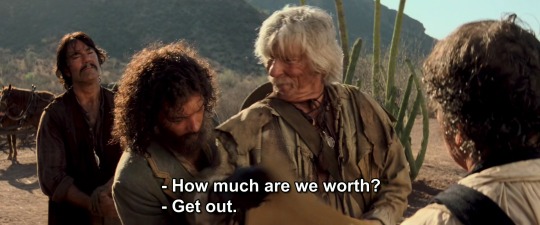



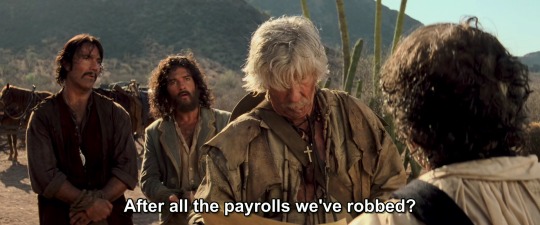
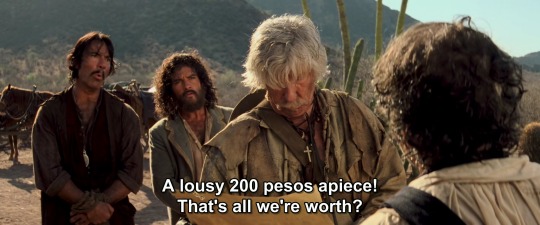

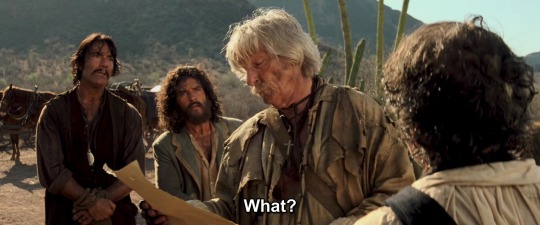

The Mask of Zorro (1998)
#The Mask of Zorro#The Murrieta Brothers#Alejandro Murrieta#Joaquin Murrieta#Three Fingered Jack#Danny watches The Mask of Zorro
71 notes
·
View notes
Text
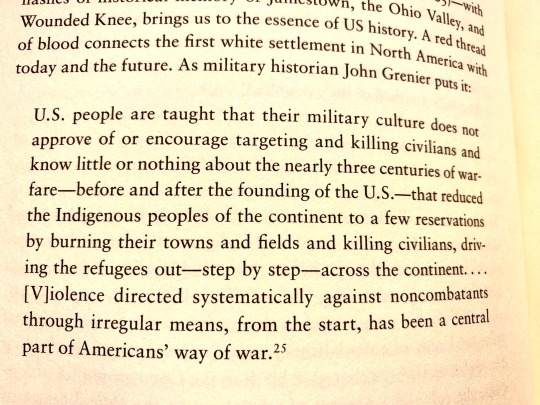
“U.S. people are taught that their military culture does not approve of or encourage targeting and killing civilians and know little or nothing about the nearly three centuries of war-fare-before and after the founding of the U.S.-that reduced the Indigenous peoples of the continent to a few reservations by burning their towns and fields and killing civilians, driving the refugees out--step by step--across the continent....Violence directed systematically against noncombatants through irregular means, from the start, has been a central part of Americans' way of war. “
Military Historian John Grenier
Excerpt from Roxanne Dunbar-Ortiz’s book:
An Indigenous People’s History of the United States
#us history#wounded knee#sand creek#trail of tears#the long walk#bear river#thanks taking#in Country#🇺🇸#land back#crazy horse#tecumseh#sitting bull#Geronimo#chief joseph#emiliano zapata#Joaquin murrieta#Pó Pay#captain Jack#war crimes#enthic cleansing#Roxanne Dunbar Ortiz#american history
266 notes
·
View notes
Text

This is the Buddy for December 14th. He's a real swashbuckler, you see. A little bit like Joaquin Murrieta. Or, you know, Don Diego de la Vega.
Although I guess he couldn't fit that big poofly hair under a half-mask. I was never too sure whether Zorro wore a half-mask or just a Robin-like domino mask. And that's probably because his costume changes in different stories. Which makes total sense, really - why would he wear the same stuff all the time? I mean, I guess it's useful for him if other people know he's the one that's doing something (although that comes with its own set of issues), but it's also useful to keep his costume practical. If he's in a bind, he can just cover his face with a piece of black cloth with holes for eyes. And if he's riding out of his villa, he can put on the whole get-up beforehand.
I think a problem with superheroes, especially the ones from the bronze age, is that they're always shown in costume, when more naturalistic storytelling would have them wear whatever's available. I understand that the reason for that is the costume sells (and makes it easier to identify the character), but it also limits the story to a level where the character is the costume, as opposed to the more practical and justified costumes of earlier eras.
On the other hand, we have superhero movies nowadays, where characters wear their costumes as little as possible, because the filmmakers are ashamed of making superhero movies. Even when it makes sense to hear, say, a helmet during a space battle, we need to see those handsome Hollywood faces.
But I guess that's an issue I'd explore if I was making my own superhero story.
5 notes
·
View notes
Text
The Head of Joaquín Murrieta (TV Series 2023– ) - IMDb
0 notes
Photo
Joaquin Murrieta inspired the creation of Zorro and Batman!
He is seen as a symbol of resistance against the violent racism of white Anglo Saxons and of resistance against Anglo oppression as well.
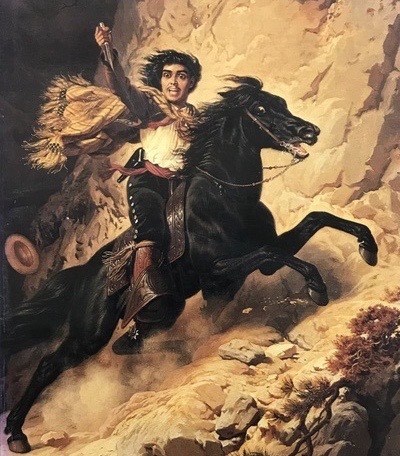

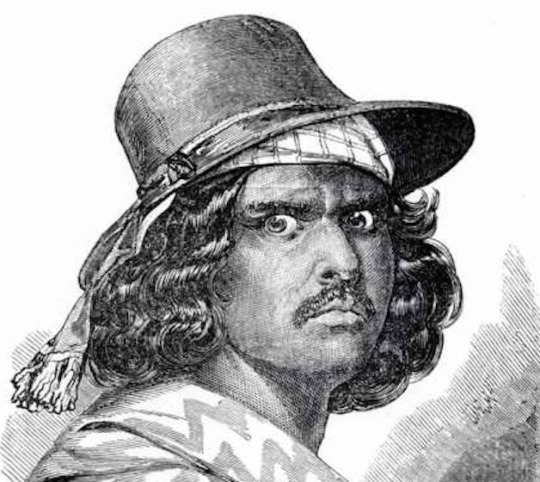
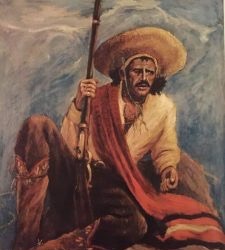
Joaquin Murrieta, the original Zorro
22 notes
·
View notes
Text
Look. Hear me out.
Jack Marston

And Joaquin Murrieta Carrillo (in Timeless)

Are the same. Fucking. Person.
LOOK. THE GOATEE AND EVERYTHING!!!
EVEN THE CLOTHES RAHAHHRHTHRHEU
28 notes
·
View notes
Text
the concept of drinks named after historical figures is always fascinating because of the entire 'he would not fucking taste like that' manner of discussion that it implies
#news from the cupola#anyway shoutout to [redacted] taqueria for being bolder than I am and now offering a drink named for joaquin murrieta#I don't know what any of the things in it taste of so I shall assume the vibe is 'medical alcohol in which his severed head was preserved'#as would be historically seemly#relatedly now I am forced to ponder how I would construct such things when it comes to other historical figures of whom I'm fond. hmm.
38 notes
·
View notes
Text
Shawn wurde 1786 als Joaquin Murrieta während des mexikanischen Unabhängigkeitskrieges geboren. 1821 ging die 300jährige Herrschaft Spaniens über Mexiko zu Ende. Er und sein Bruder Felipe mussten schon früh ohne Eltern klar kommen. Sie hatten ihre Eltern in diesem Krieg verloren. Die Brüder waren Diebe. Haben sich mit Diebstählen und diversen Raubzügen über Wasser gehalten. Sie wurden erwischt. Felipe auf der Flucht angeschossen. Er rettete Shawn das Leben und sagte, er solle abhauen. Nach Diskussionen tat er es... sein Bruder wurde erschossen und von dem damaligen Capitan geköpft. Der Capitan hatte Köpfe gesammelt. Während seiner Trauer traf Shawn auf Elena de la Vega... sie wollte ihn als Gefährten ... und verwandelte ihn 1822 ohne Shawn wählen zu lassen. Sie wurden ein Liebespaar, wurden Eltern von zwei Söhnen, doch Elena benutze ihn nur für ihr Vergnügen. Sie genoss es, ihn manipulieren und steuern zu können, wann immer sie es wollte. Shawn war ihre ganz persönliche Marionette. Er war ihr hörig und nicht in der Lage sich dem zu entziehen. Erst als Elena ihn verließ, mit einem anderen Gefährten samt der gemeinsamen Kinder verschwand, begann sich diese Verbindung zu lösen. Shawn litt unter diesem Entzug Höllenqualen, da ihr Blut sich mit in seinem Körper befand. Unter diesem Entzug bekam er Wahnvorstellungen und begann ein regelrechtes Massaker anzurichten. Dadurch wurde Baptiste Durand - ein Urvampir und Wächter im Dienste der Vatikanstadt Rom - auf Shawn aufmerksam. Der Franzose war direkt von Shawn fasziniert. Baptiste hatte den Befehl aus Rom ihn zu töten, doch er wollte den Jungvampir heilen, verstehen und studieren. Baptiste war erfolgreich und Shawn lernte viel von ihm. Seitdem haben die Zwei eine Art Vater-Sohn-Beziehung zueinander.

Shawn bettete sich viele Jahre in seiner Gruft zur Ruhe. Nach dem Verlust seiner Söhne und der gescheiterten Beziehung mit Elena wollte er nur noch seinen Frieden. Doch die Klänge der Rockmusik seiner späteren Bandmitglieder weckten ihn auf. Shawn verließ seine Gruft und suchte seine Bandmitglieder auf um diese zu verwandeln und die Rockband TDS - The Damned Souls zu gründen. Seit vielen Jahren sind sie sehr erfolgreich auf der Welt unterwegs. Shawn traf auf einer Tour Centime in Paris. Sofort erwischte es ihn so intensiv als er sie sah, dass er es nicht wahrhaben wollte. Centime und Shawn waren anfänglich unfreundlich zueinander und auf Abstand. Sie gingen sogar getrennte Wege bis sie sich der Macht dieser Verbundenheit zueinander nicht mehr entziehen konnten. Zwischen den Beiden kam es zu einer leidenschaftlichen Liebesbeziehung, die an Intensität nicht zu übertreffen war.





Centime und Shawn hatten direkt am Anfang ihrer Beziehung mit vielen Hürden und Herausforderungen zu kämpfen. Jeder Einzelnen stellten sie sich, wurden stärker miteinander und ihre Liebe wuchs daran.
Shawn und Centime [ @pxecedm ] sind seit dem 07. August 2023 verheiratet und haben 3 gemeinsame Kinder.
El amor de mi vida ❤️🖤❤️🔥 @pxecedm




Merveille 🩷 geboren 16. April
Jenaro Philippe 💙 geboren 4. Dezember
Javiero Maxence 🩵 geboren 4. Dezember
Cenaquíme Cailyn 🧡 geboren 13. Januar
»»———★———-««»»————-★————-««
»»———★———-««»»————-★————-««
»»———★———-««»»————-★————-««
»»———★———-««»»————-★————-««
»»———★———-««»»————-★————-««
#vampire#rock music#music#roleplay#userfakevz#fakevz#fakevzuser#husband from hot wifey#proud father#married
21 notes
·
View notes
Text
saw Zoro trending and got very sad that is was some guy with green hair and not Diego De La Vega, The Zorro, The Hero of El Pueblo de Nuestra Señora la Reina de los Ángeles del Río Porciúncula, based off Joaquin Murrieta 😔
18 notes
·
View notes
Text


The Mask of Zorro (1998)
8 notes
·
View notes
Text
One of the problems with consuming so much Zorro material is the inconsistencies...
Zorro is Diego de la Vega (with or without the "de la" in the surname), unless he's Alejandro Murrieta, who learned to be Zorro from Diego de la Vega. Alejandro is the name of Diego's father, unless it's the name of the guy he taught to be Zorro after him. Joaquin is Alejandro's brother, but also his son. Diego is the first Zorro, except when he wasn't. He's also the only active Zorro, except when he's not.
He has a mute butler name Bernardo, who is pretending to be deaf as well in order to act as Diego's spy. He matters a lot to the story, except when he doesn't matter at all and isn't even there.
Zorro's primary love interest is Lolita, except when it's Elena (who is Zorro's daughter) or Anna Maria or Moneta. She's his childhood friend, except when she's not. Diego is charming and flirtatious, pretending to be an "unmanly" pacifist, except when he's pretending to be an extremely dull fop/dandy suffering from terminal ennui.
His mom is rarely, but not never, alive.
The Capitán is the primary villain, except when it's the Governor, or the Magistrado. The Sergent may or may not be a good guy.
The story takes place in *handwave* 19th century California, sometimes the 1820s, sometimes the 1830s, sometimes the 1880s or '90s.
Anyway, it's a lot. XD Still picking and choosing which aspects I'm leaning into, but as I said before, 78 episodes of Disney series has left its mark... of Zorro. X3
1 note
·
View note
Text
fuck your small talk. I want to hear you theories on if Joaquin Murrieta was a real person or just a figure of California bandit legend
1 note
·
View note
Text
0 notes
Text
0 notes
Text
0 notes
Text
Events (before 1900)
306 – Constantine I is proclaimed Roman emperor by his troops. 315 – The Arch of Constantine is completed near the Colosseum in Rome to commemorate Constantine I's victory over Maxentius at the Milvian Bridge. 677 – Climax of the Siege of Thessalonica by the Slavs in a three-day assault on the city walls. 864 – The Edict of Pistres of Charles the Bald orders defensive measures against the Vikings. 1137 – Eleanor of Aquitaine marries Prince Louis, later King Louis VII of France, at the Cathedral of Saint-André in Bordeaux. 1139 – Battle of Ourique: The Almoravids, led by Ali ibn Yusuf, are defeated by Prince Afonso Henriques who is proclaimed King of Portugal. 1261 – The city of Constantinople is recaptured by Nicaean forces under the command of Alexios Strategopoulos, re-establishing the Byzantine Empire. 1467 – The Battle of Molinella: The first battle in Italy in which firearms are used extensively. 1536 – Sebastián de Belalcázar on his search of El Dorado founds the city of Santiago de Cali. 1538 – The city of Guayaquil is founded by the Spanish Conquistador Francisco de Orellana and given the name Muy Noble y Muy Leal Ciudad de Santiago de Guayaquil. 1547 – Henry II of France is crowned. 1554 – The royal wedding of Mary I and Philip II of Spain celebrated at Winchester Cathedral. 1567 – Don Diego de Losada founds the city of Santiago de Leon de Caracas, modern-day Caracas, the capital city of Venezuela. 1591 – The Duke of Parma is defeated near the Dutch city of Nijmegen by an Anglo-Dutch force led by Maurice of Orange. 1593 – Henry IV of France publicly converts from Protestantism to Roman Catholicism. 1603 – James VI and I and Anne of Denmark are crowned in Westminster Abbey. 1609 – The English ship Sea Venture, en route to Virginia, is deliberately driven ashore during a storm at Bermuda to prevent its sinking; the survivors go on to found a new colony there. 1668 – A magnitude 8.5 earthquake strikes eastern China, killing over 42,000 people. 1693 – Ignacio de Maya founds the Real Santiago de las Sabinas, now known as Sabinas Hidalgo, Nuevo León, Mexico. 1718 – At the behest of Tsar Peter the Great, the construction of the Kadriorg Palace, dedicated to his wife Catherine, begins in Tallinn. 1722 – Dummer's War begins along the Maine-Massachusetts border. 1783 – American Revolutionary War: The war's last action, the Siege of Cuddalore, is ended by a preliminary peace agreement. 1788 – Wolfgang Amadeus Mozart completes his Symphony No. 40 in G minor (K550). 1792 – The Brunswick Manifesto is issued to the population of Paris promising vengeance if the French royal family is harmed. 1797 – Horatio Nelson loses more than 300 men and his right arm during the failed conquest attempt of Tenerife (Spain). 1799 – Napoleon Bonaparte defeats a numerically superior Ottoman army under Mustafa Pasha at the Battle of Abukir. 1814 – War of 1812: An American attack on Canada is repulsed. 1824 – Costa Rica annexes Guanacaste from Nicaragua. 1837 – The first commercial use of an electrical telegraph is successfully demonstrated in London by William Cooke and Charles Wheatstone. 1853 – Joaquin Murrieta, the famous Californio bandit known as the "Robin Hood of El Dorado", is killed. 1866 – The United States Congress passes legislation authorizing the rank of General of the Army. Lieutenant General Ulysses S. Grant becomes the first to be promoted to this rank. 1868 – The Wyoming Territory is established. 1869 – The Japanese daimyōs begin returning their land holdings to the emperor as part of the Meiji Restoration reforms. (Traditional Japanese Date: June 17, 1869). 1894 – The First Sino-Japanese War begins when the Japanese fire upon a Chinese warship. 1897 – American author Jack London embarks on a sailing trip to take part in the Klondike's gold rush, from which he wrote his first successful stories. 1898 – Spanish–American War: The American invasion of Spanish-held Puerto Rico begins, as United States Army troops under General Nelson A. Miles land and secure the port at Guánica.
0 notes